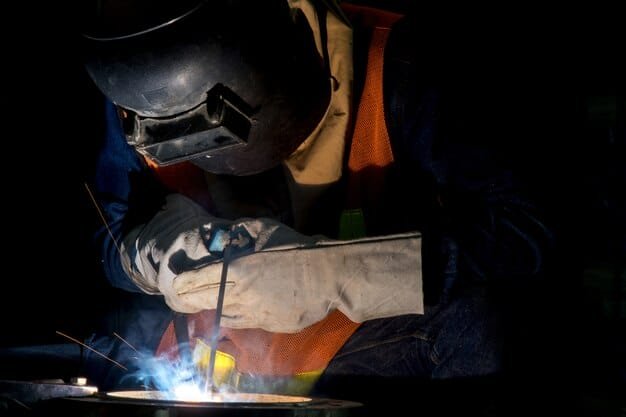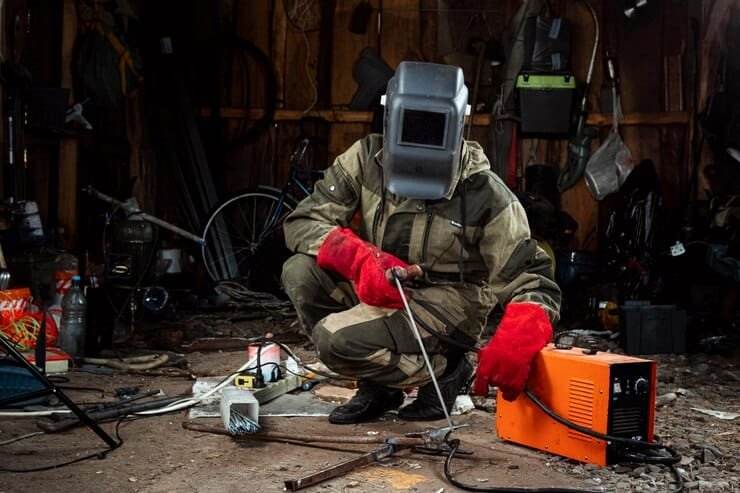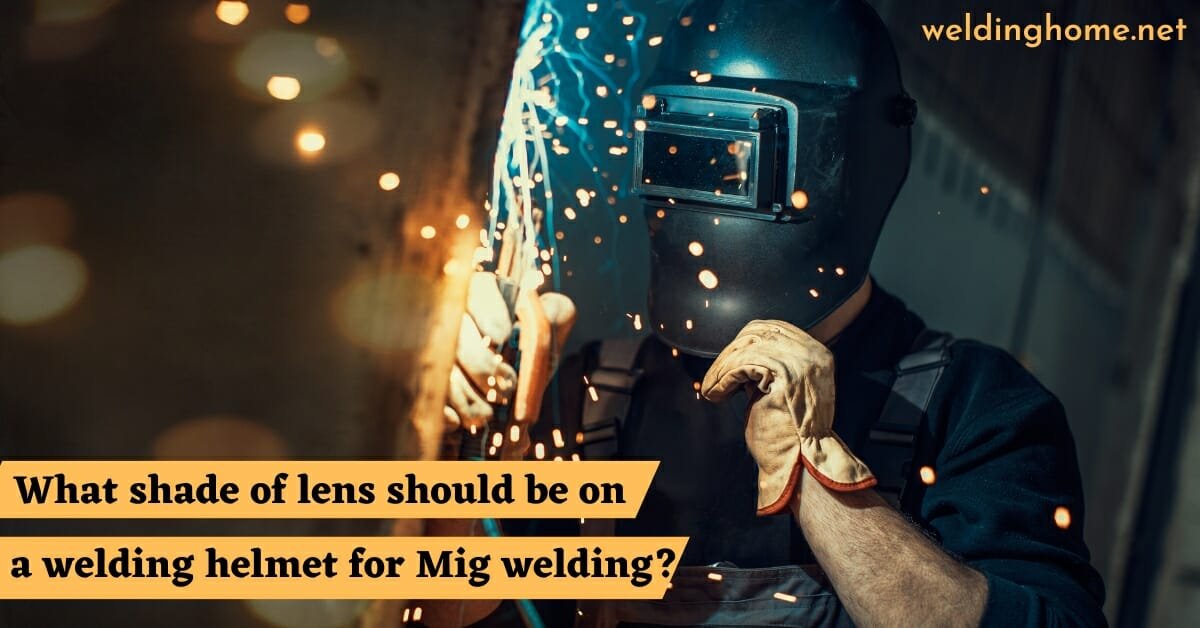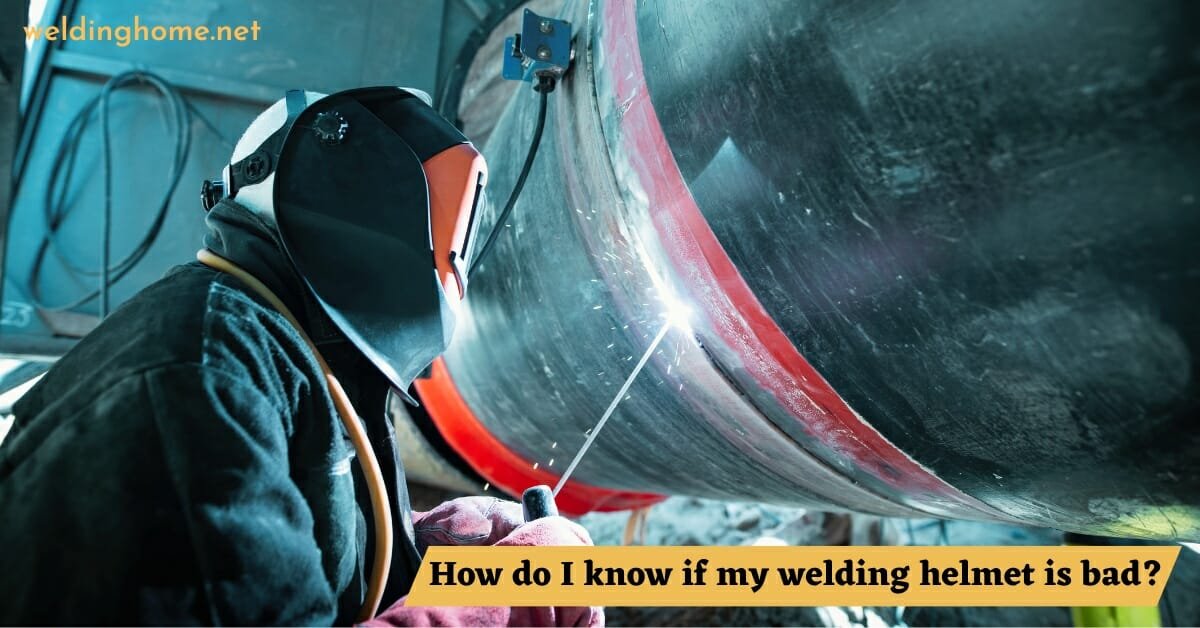“How To Start Welding? Welding is a beneficial skill that can be used for various applications. Whether you’re looking to make repairs on your vehicle, create custom pieces for art projects, or want to get into welding as a hobby, learning how to weld is both challenging and rewarding.
The most essential tool for welding is the welder itself, which will vary depending on what types of welding you plan on doing. A MIG or TIG welder may be all you need if you plan on doing basic stick welding. However, if you plan on doing more advanced welding techniques, such as aluminum or stainless steel, you may need to invest in a more specialized welder.
To get started with welding, there are a few tools, materials, and safety precautions you’ll need to consider.
What are the four things you need before start welding?
Before welding, you need the following:
- A welder
- Safety gear (gloves, helmet, and protective clothing)
- The right welding rod for the metal being welded
- A workspace free from any flammable object
What welding is easiest to learn?
How to Start Welding? MIG (Metal Inert Gas) welding is generally considered the easiest to learn, as it’s relatively simple and requires minimal equipment. MIG welding is also well-suited for various materials, including steel, aluminum, and stainless steel. A beginner welder can quickly become proficient in this technique with practice. Stick welding is another popular option for those just starting, though it can be more challenging to master. It’s best suited for thick metals and produces less slag than MIG welding.
TIG (Tungsten Inert Gas) welding is a bit more challenging, but it offers greater precision and control for welds that require a high level of detail. It’s generally used on thinner metals, such as aluminum and stainless steel. No matter which type of welding you choose to learn, How To Start Welding? practicing proper safety measures is essential. Good luck!
Are there any certifications available for welders?

Several certifications are available for welders to demonstrate their expertise in the field. In the United States, the American Welding Society (AWS) offers certificates such as Certified Welder (CW), Senior Certified Welder (SCW), and Master Certified Welder (MCW). Each certification covers various welding techniques and materials. Additionally, some countries have welding certifications that are recognized worldwide. For example, EN 287-1 is a widely recognized welding certification in Europe.
How To Start Welding? Welder Certifications are essential in displaying a mastery of the welding field that can increase job opportunities. With one, you can showcase your expertise and knowledge, putting yourself at an advantage when finding employment. Certifications are crucial because they demonstrate knowledge and understanding of welding, which can result in greater employment possibilities.
For those just getting started, Start Welding introductory classes are available that cover safety precautions, materials handling, equipment selection, setup and operation, and welding techniques. Taking a class is a great way to learn the welding basics and get certified.
No matter what level of expertise a welder may have, it is essential always to take safety precautions when Start Welding to ensure a safe working environment. Following the proper safety rules and regulations is vital to achieving success in the welding industry.
By following these safety tips, Start Welding welders can help ensure they stay safe while welding and make their projects look great! Good luck and happy welding!
What is the most essential safety measure for welding?
The most essential safety measure when you going to Start Welding, welding is ensuring you have the right protective gear, such as a welding helmet, gloves, and fire-resistant clothing. The welding helmet protects from the UV rays emitted during the process, while the gloves and clothing protect you from sparks and other debris that can be produced. Before Start Welding your project, ensure your workspace is clear of all flammable materials.
Additionally, keeping an appropriate distance between the rod and the material being welded is essential to ensure a strong weld. Finally, it’s important always to follow directions for your welding equipment and be aware of any potential hazards that could occur!
What is the investment to launch my welding journey?
The cost of going to Start Welding will depend on the type of welder you need and the materials you plan to use. A basic MIG or TIG welder can be purchased for about $200-$500, while more specialized welders may cost upwards of $2,000. Additionally, welding rods, safety gear, and other materials can vary in cost depending on the type and size of the material. To ensure you get the most bang for your buck, it’s wise to research and compare prices before committing to any purchases.
What types of projects can you do with welding?
Start Welding, Welding is a precious and versatile talent that can be utilized for many projects. Joint welding projects include building car parts, creating custom artwork, repairing broken tools and equipment, fabricating furniture, and making sculptures. Finely honed skills and the right tools make welding a great way to tackle any DIY project!
What are some safety tips for welding?

When it comes to Start Welding, safety should always come first. Before beginning any welding project, make sure to set up your workspace in an area that’s free from any flammable objects. Wear protective gear such as gloves and a helmet at all times, and constantly adjust the amperage of your welder to the recommended level for your material. Make sure to keep a safe distance between yourself and the materials you’re welding, and always be aware of your surroundings. Adopting these precautionary measures will guarantee that you remain secure while welding.
Is there any specific type of welder for different metals?
Yes, depending on the type of metal being welded, when you Start Welding you may need a specialized welder.TIG welders are extraordinarily versatile and can be used for fusing many different materials, such as aluminum, stainless steel, and other thin metals requiring precision.MIG welders are often used for welding mild steel or other thicker metals. Stick welders are great for larger projects that need much power, while oxy-acetylene torches can heat metals faster than any other type of welder.
What equipment is required for welding?

The essential equipment required for Start Welding includes a welder, safety gear (gloves, helmet, and protective clothing), the correct welding rod for the metal being welded, and a workspace free from any flammable objects. You may also need clamps to help hold your materials in place while welding. If you’re using a welder that requires electricity, ensure access to an outlet and the proper extension cord when all the necessary elements are accounted for, and you will be prepared to Start Welding!
What is the best way to practice welding?
The best way to practice Start Welding is by doing simple projects with scrap metal. Start with a basic welding technique such as MIG or TIG and practice your welds on scrap metal to gain confidence and become familiar with the process. You can try more complicated projects, such as creating custom artwork or repairing broken tools, as you get better. Remember, safety comes first! Make sure to wear all necessary protective gear whenever you Start Welding practices.
What is the starting salary for a welder?
An entry-level welder typically earns an annual salary of approximately $25,000.This amount can vary greatly depending on the type of projects you are working on and your experience level. With more experience in welding, you can earn higher salaries or even find employment with welding companies that offer competitive wages.
What are the three skills you need for welding?
The three skills you need for Start Welding are precision, safety, and knowledge. To ensure the success of any welding project, accuracy is vital. However, safety should be your number one priority; always equip yourself with protective gear before beginning a welding job. Finally, knowledge of the different types of welders, safety regulations, and material properties will help ensure that you get the best results from your welding projects.
What are the five five welding essentials?
The five welding essentials are
- safety gear,
- a welding helmet,
- the correct type of welder,
- the suitable welding rods for your project, and
- a workspace free from flammable objects.
You may also need clamps to help hold your materials in place while welding and access to an electric outlet or extension cords if you’re using a welder that requires electricity.
When Welding, the most crucial safety rule to remember is always to wear protective gear and ensure you work in a well-ventilated area.
To ensure your safety, you must wear the appropriate protective gear while welding, which includes gloves and a helmet. Additionally, you should ensure your workspace is free from flammable objects, keep a safe distance from your materials, and always be aware of your surroundings. Utilize these safety precautions to ensure your welding experience is safe and pleasant.
Can I teach myself welding?

You can teach yourself TIG welding. How To Start Welding? with the right resources, practice, and determination. Before welding, you need a welder, safety gear, filler material, and a workpiece to weld on. The expense of launching your welding journey is contingent on the kind of welder you pick. Generally speaking, MIG or TIG welders are the most common, typically ranging from around $200 to $1000.
Equipment required for start welding includes a welder, safety gear (gloves, helmet, and protective clothing), filler material, electrodes or wire, clamps/vices to hold the workpiece in place, and a gas cylinder of shielding gas if using MIG welding or TIG welding. Always ensure sufficient air circulation when welding to protect yourself from inhaling harmful toxins.
The three skills needed for welding are reading and interpreting drawings, geometry, and basic math; knowledge of materials; and an understanding of electricity/electronics. The five essentials for welding include a clean surface, good fit-up, the correct welding technique, proper electrodes and filler material, and a clean workspace.
Learning how to weld takes time and practice, but you can become an expert welder with dedication! With the right equipment, preparation, and safety precautions, you can do various welding projects, including making custom artwork, repairing broken tools, and creating structures. Good luck, and have fun!
Conclusion
Welding is an exciting and rewarding skill with many potential applications in industrial and artistic projects. To become a successful welder, you need precision, safety, knowledge of welding techniques and materials, the right equipment, and practice. Following these guidelines and using the proper protective gear will help ensure your security while also allowing you to create beautiful, unique pieces. With steadfast commitment and tireless effort, you can master welding in weeks!
Happy welding!
FAQS
Is welding an easy career?
Welding is a tough job that requires skill and patience and is not for those looking for something easy and cushy. However, there are many advantages to welding and a host of benefits available that make welding a preferred profession over other trades for many.
What are the disadvantages of welding?
Disadvantages
- It is hazardous when performed under the safety and security guidelines.
- It is a difficult task to dismantle the joined material through welding.
- Requires skilled labor and electric supply
Which welding is most in demand?
Oil, gas, water, and other pipelines provide the lifeblood of our infrastructure. Pipe welders will always be in high demand as long as the need for fuel and other resources is high. Many pipe welders work on oil rigs and refineries. These facilities comprise the majority of the oil and gas industry.



